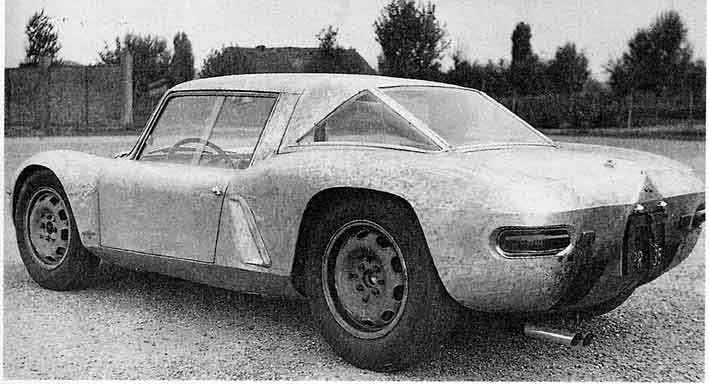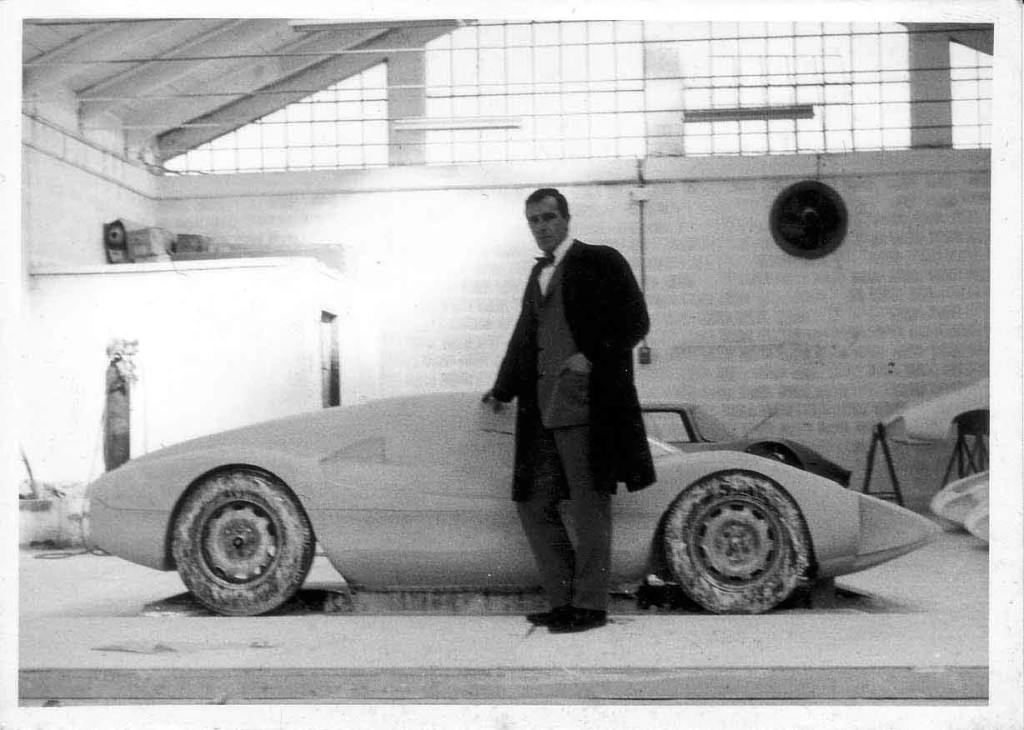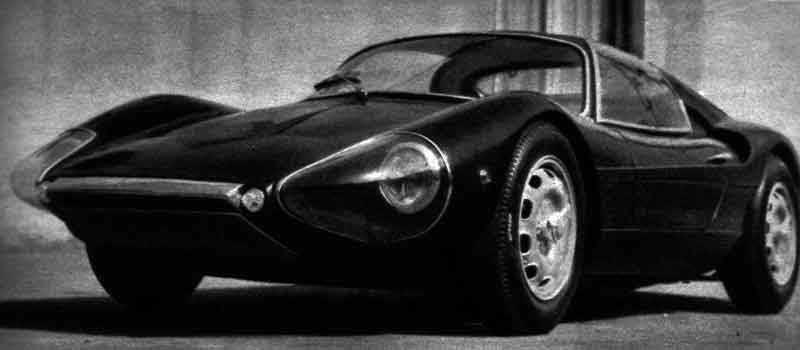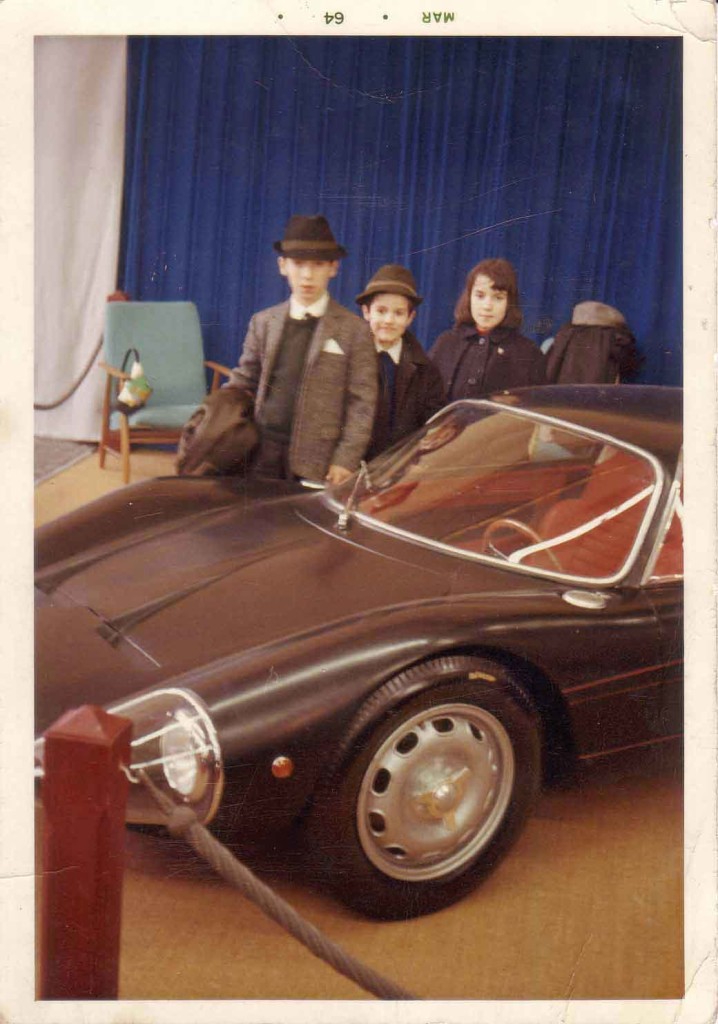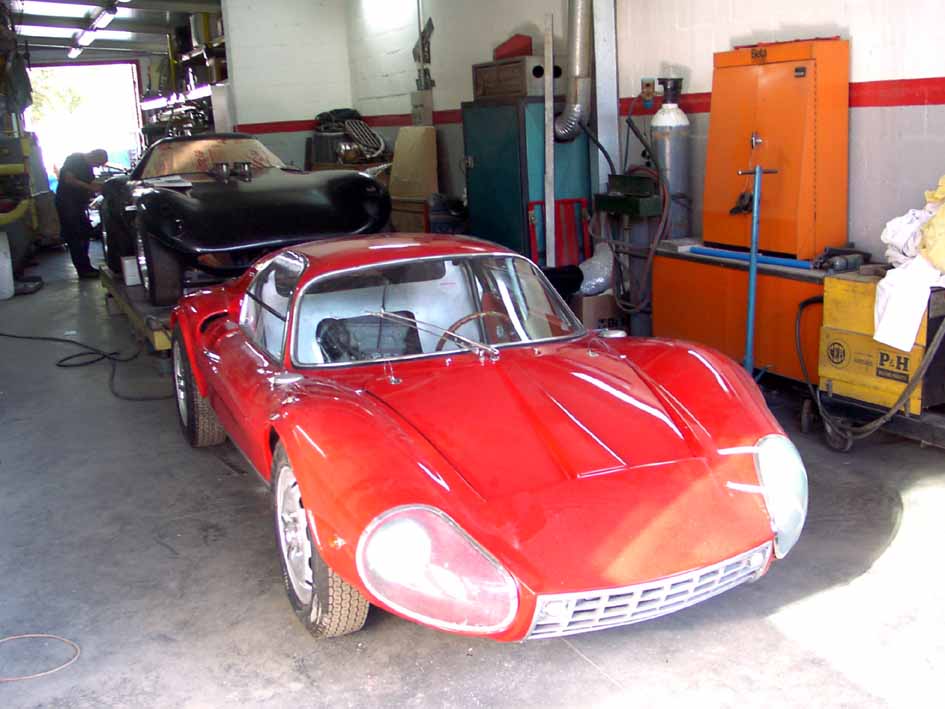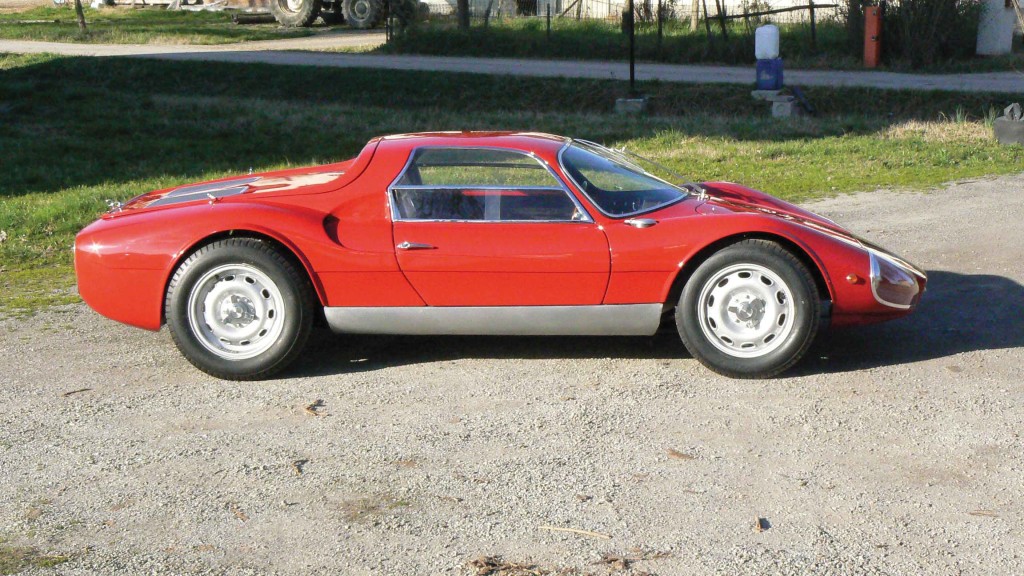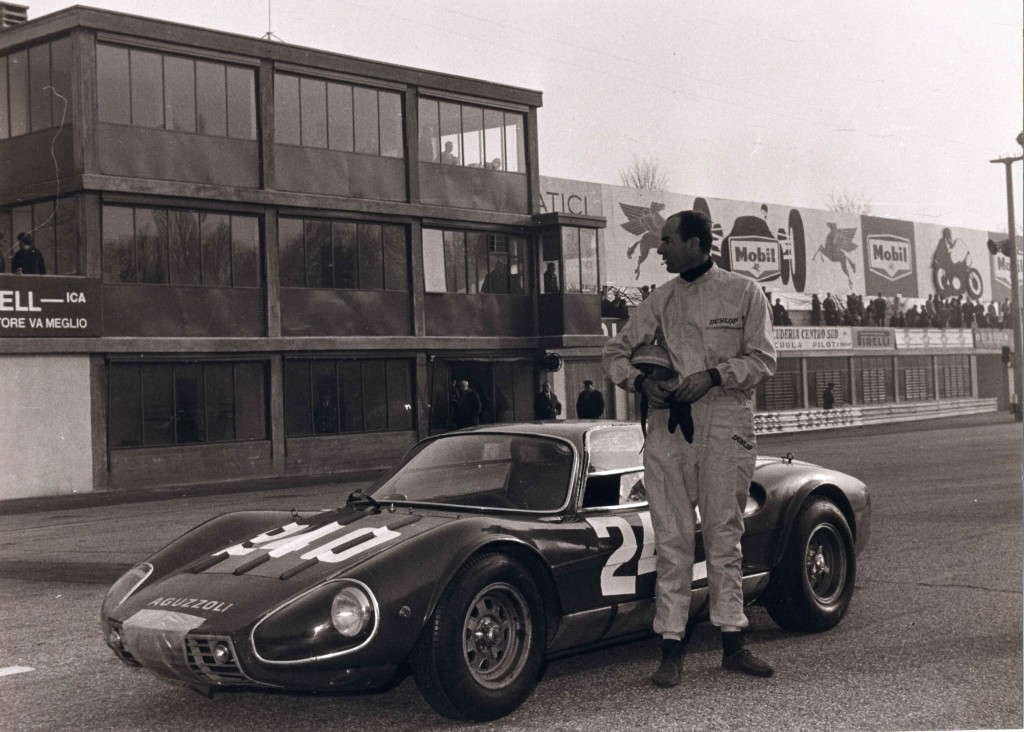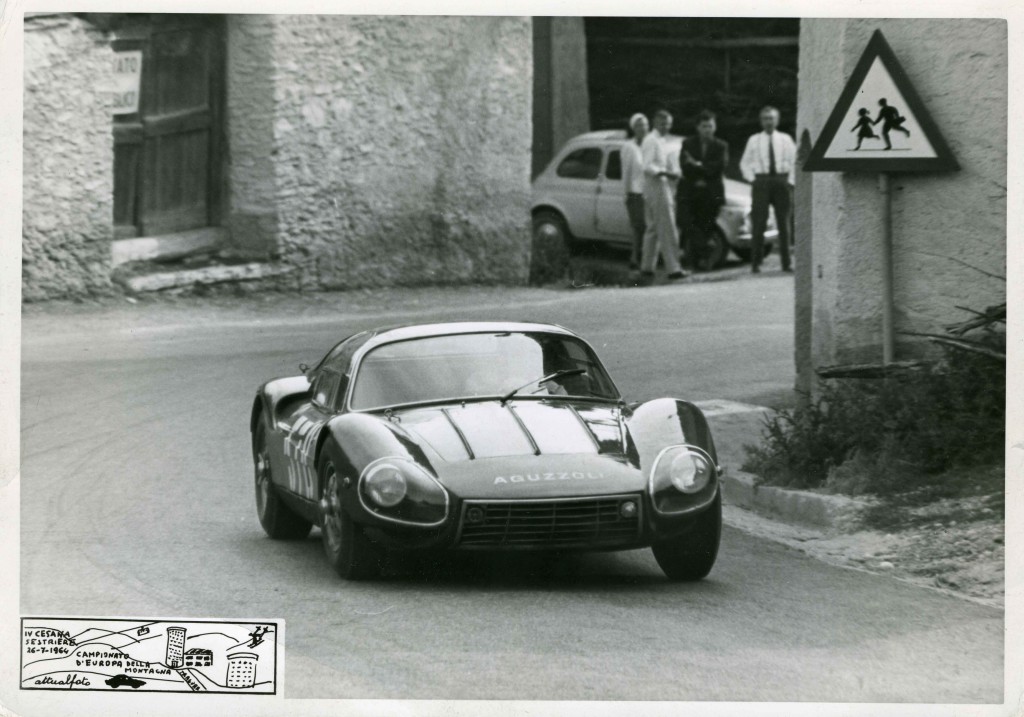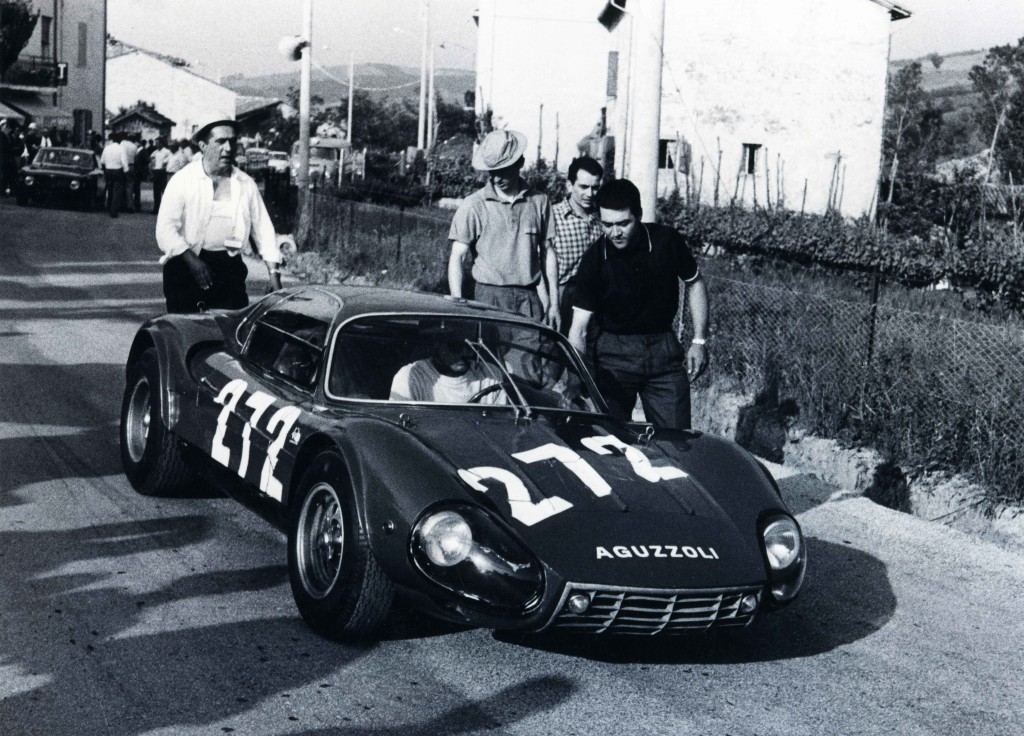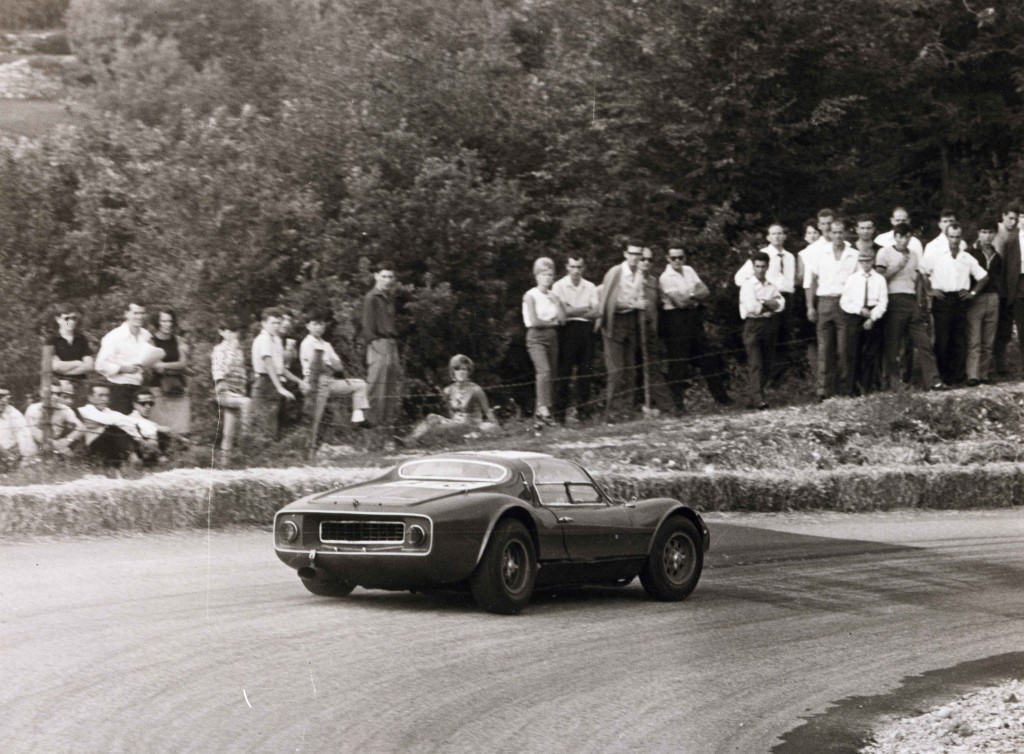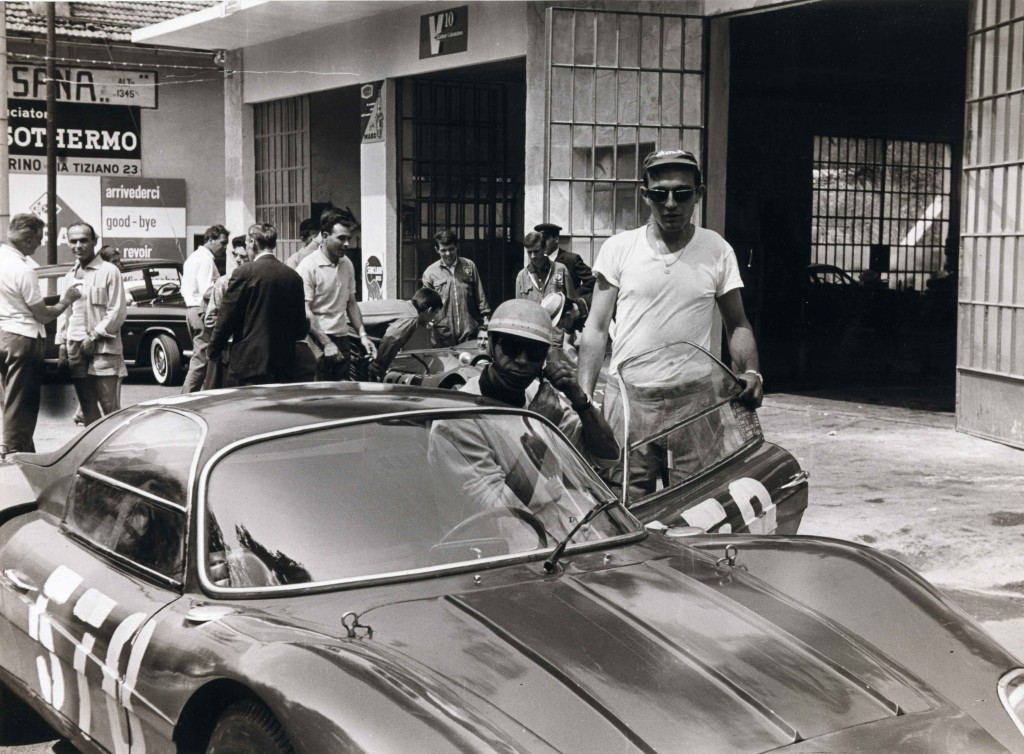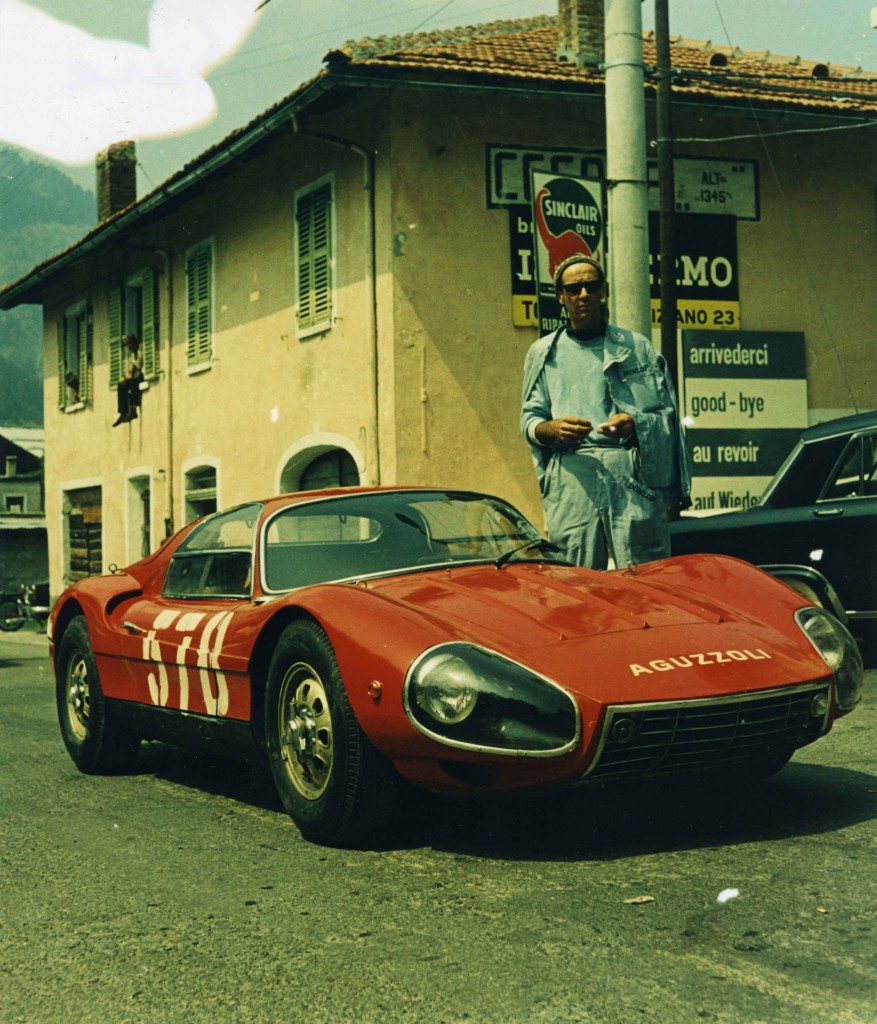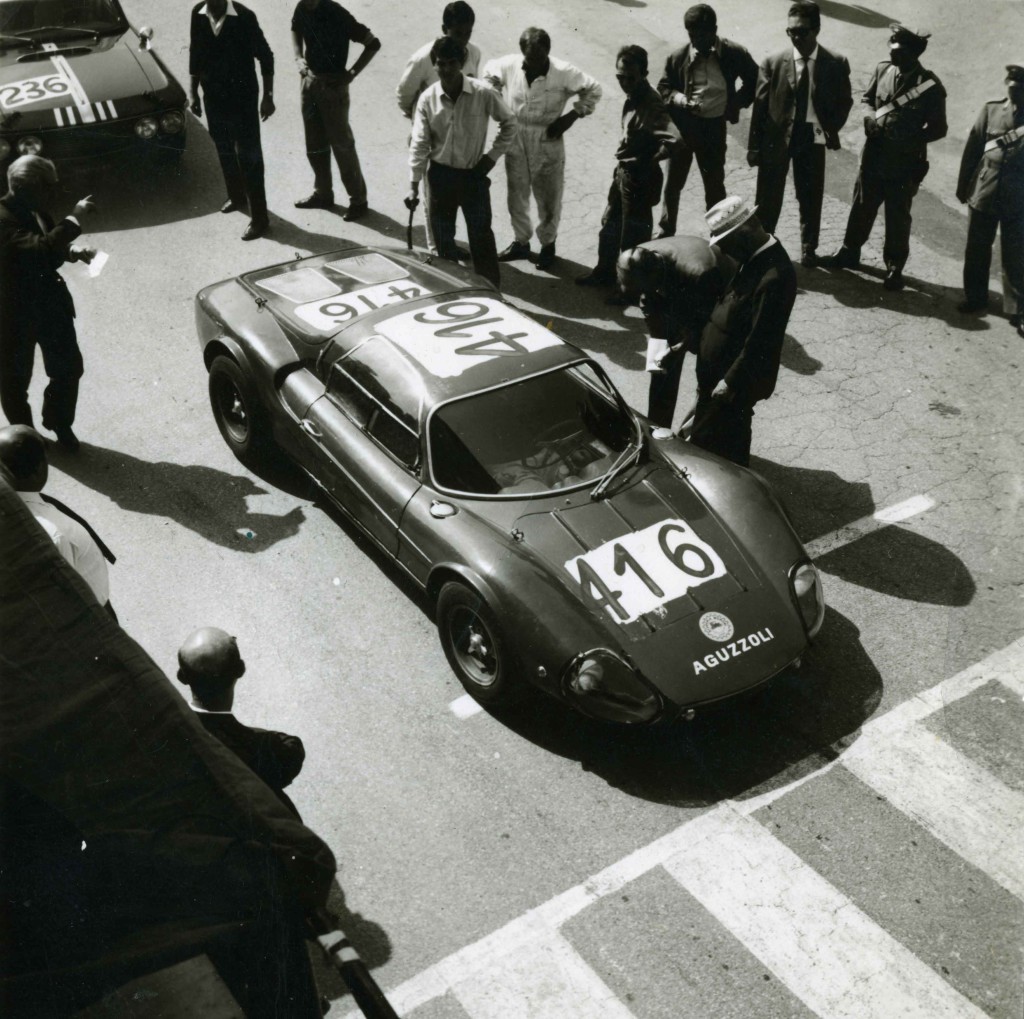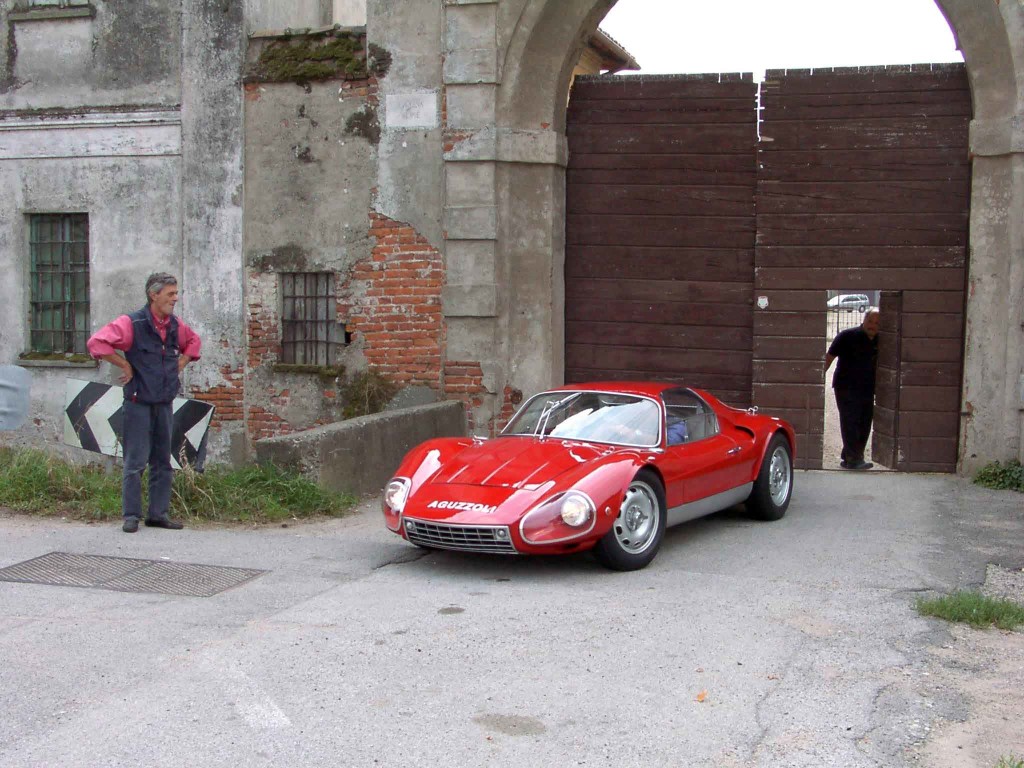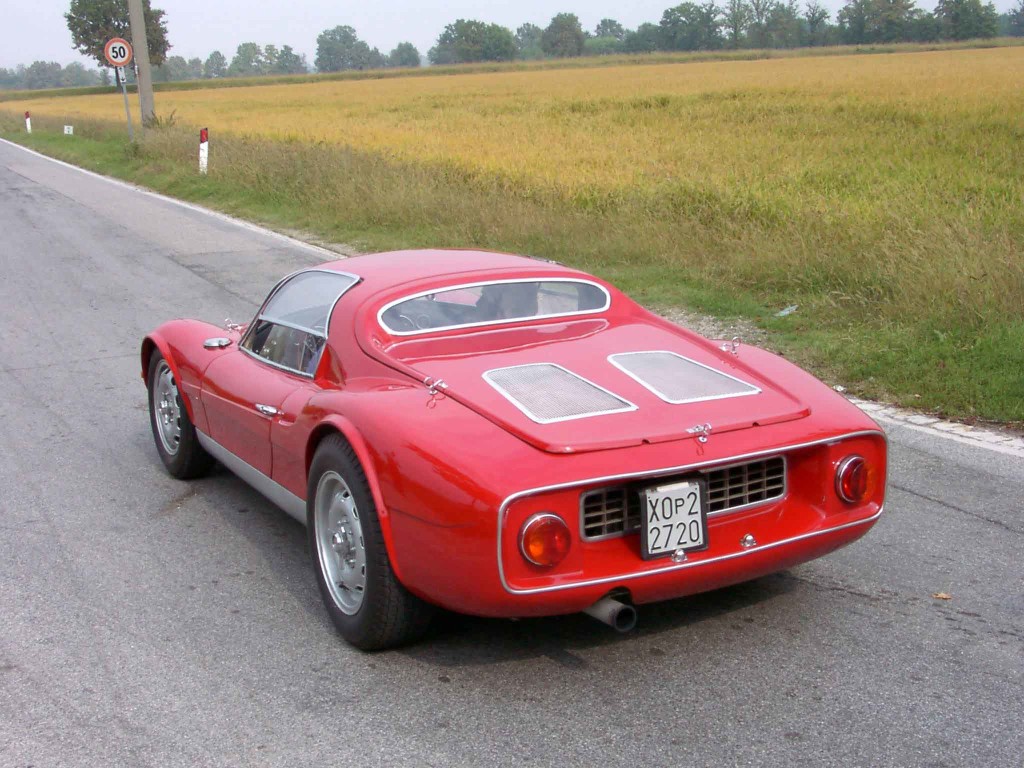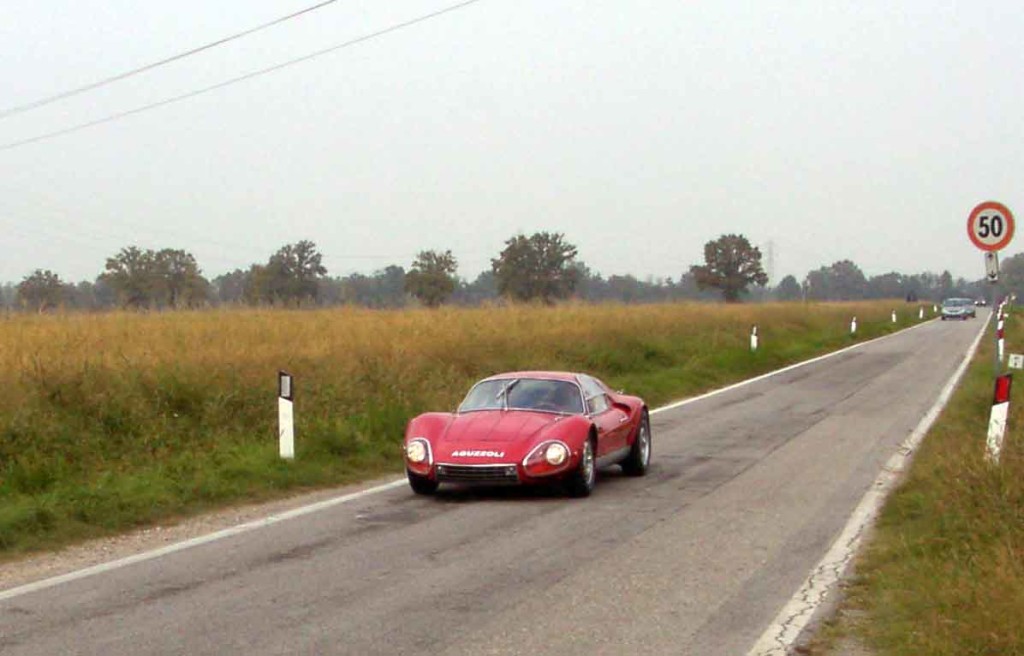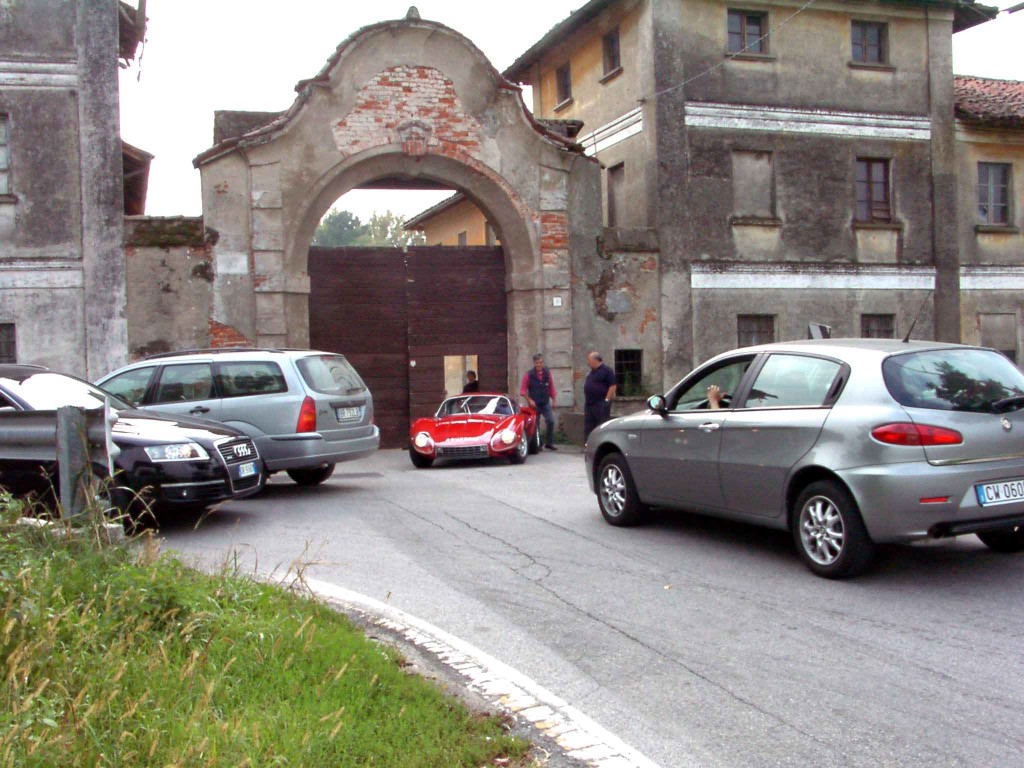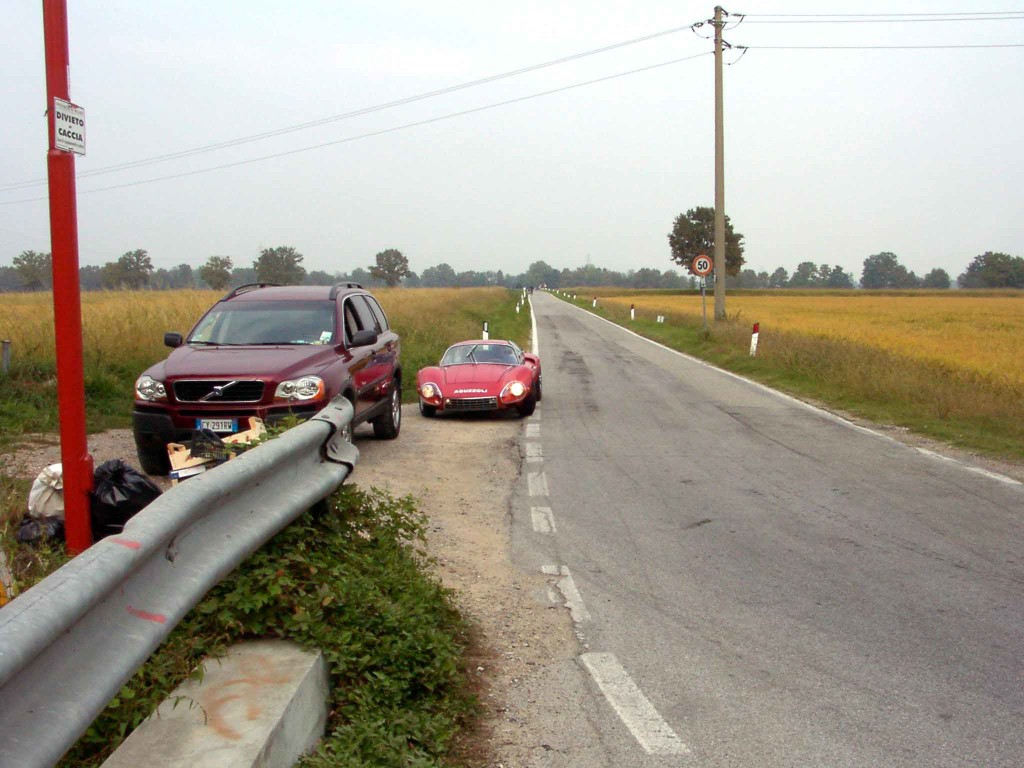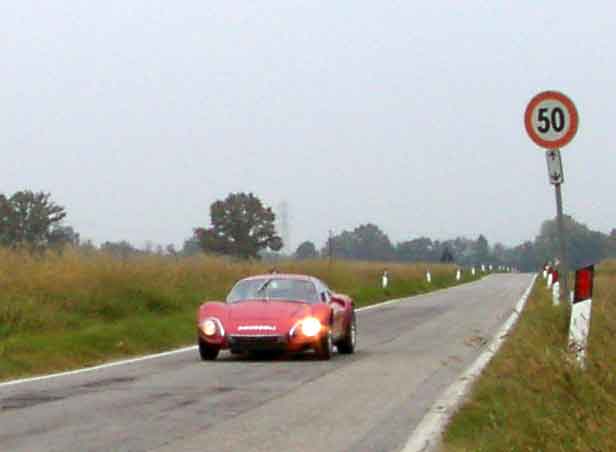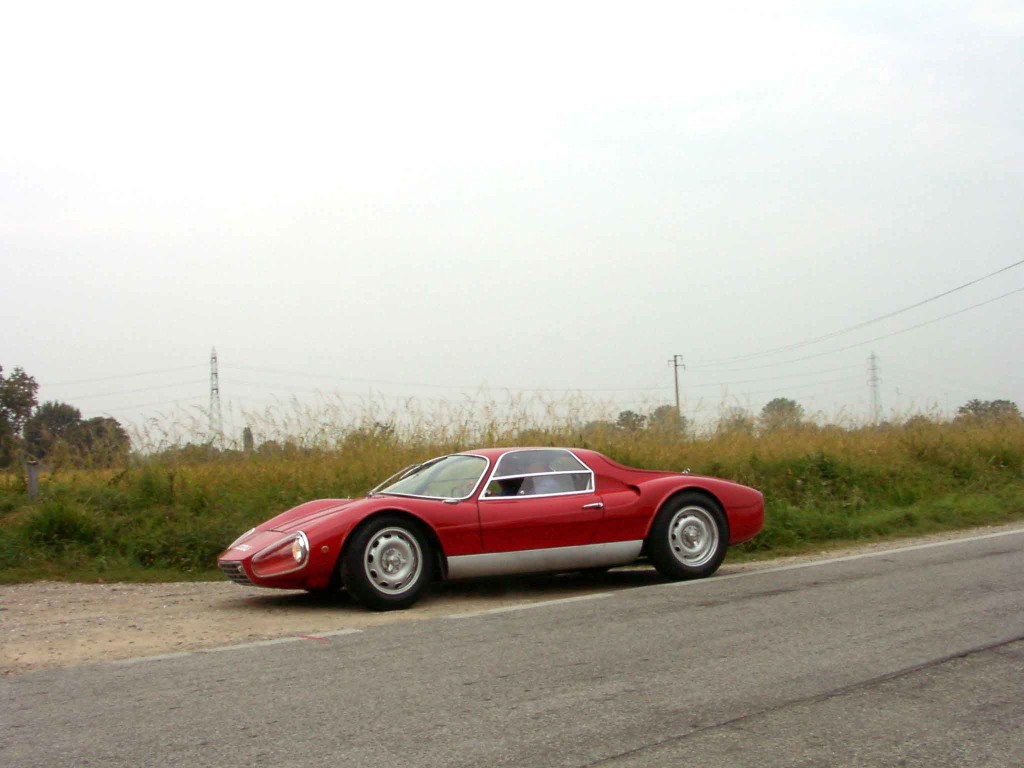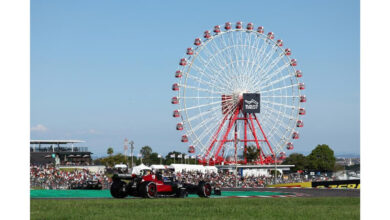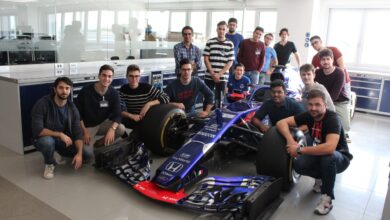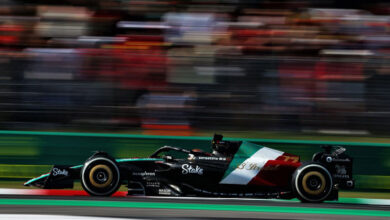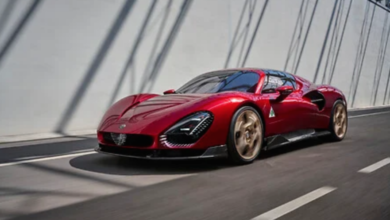HISTORY – AGUZZOLI CONDOR: how a dream is born
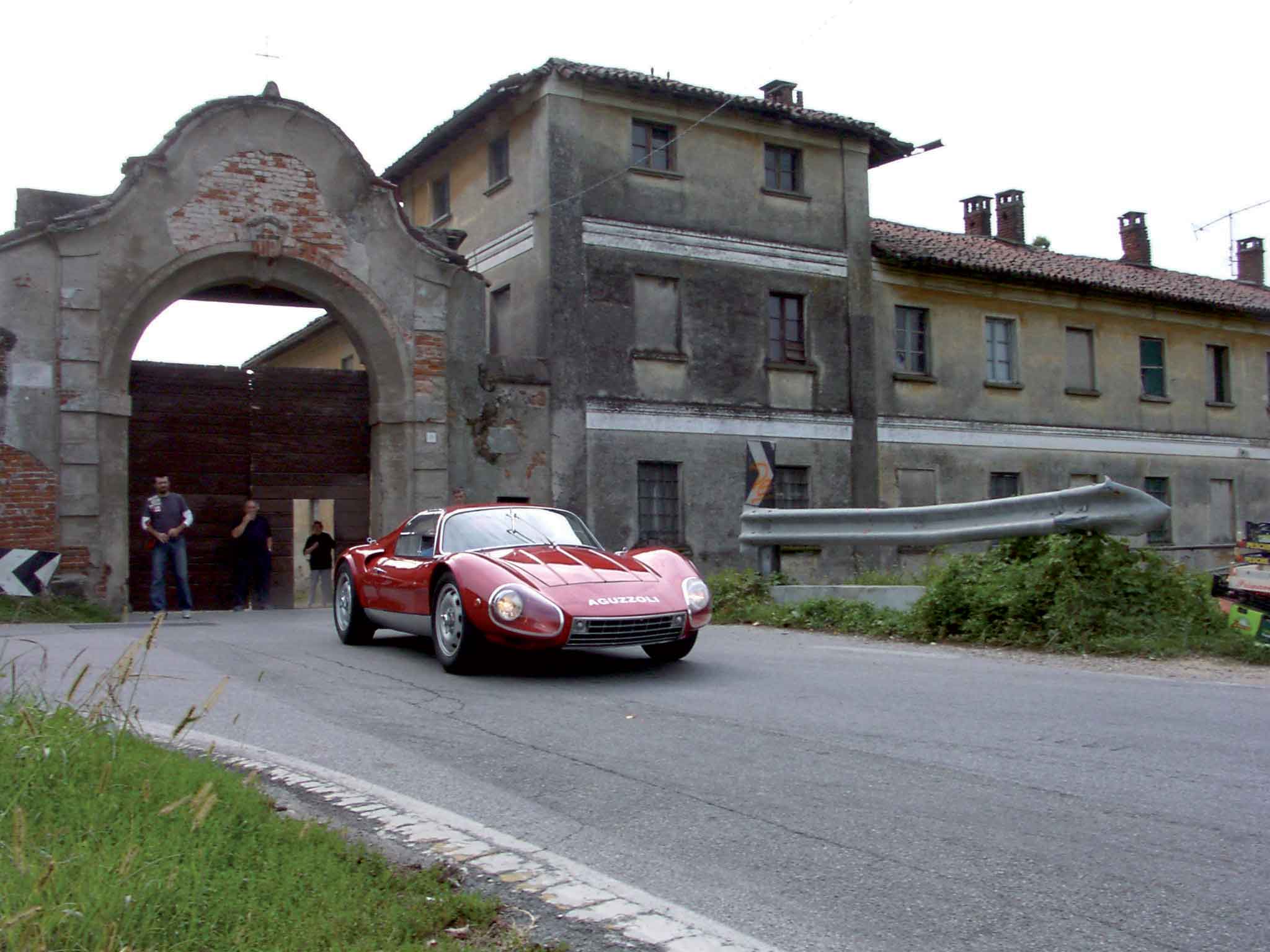
By Fabrizio Ferrari
BETWEEN THE END OF THE ‘50S AND THE EARLY ‘60S THE CENTRAL REAR ENGINE BECAME SUCCESSFUL FIRST IN FORMULA 1 AND THEN IN SPORTS RACING CARS
Even though with an illustrious precedent in the famous Auto Union one-seater designed by Ferdinand Porsche in the thirties, but in any case, after a relatively long period of oblivion, only in the early sixties was the rear-central engine technology definitely successful in Formula 1, where it had been re-introduced by the British Cooper (World champion in the two years 1959-60), then very soon also followed by Enzo Ferrari, initially against this technical solution, but immediately winner of the 1961 Championship, with the single-seater 156 conceived by Ing. Carlo Chiti.
In a short time, the technical solution of the rear-central engine thus took hold also in Sports racing and, subsequently, it also reached maturity on road sports cars.
IMMEDIATELY AFTER THE BRAND NEW TECHNICAL SOLUTION OF THE REAR-CENTRAL ENGINE IT ALSO BEGAN TO TAKE HOLD IN PROJECTS FOR ROAD GT
Among the first believers, besides Chiti who, passing from Ferrari to the newly established Bologna company ATS (acronym of Automobili Turismo Sport), conceived, besides a single-seater for Formula 1 (that participated in the 1963 championship), also a fabulous GT with a rear-central engine (the same V8 as the F1 taken to 2500 c.c.) that saw the light in 1964.
In the same period, at Modena, also Alejandro De Tomaso, after having built several single-seaters for formula 3 and other minor formulas, all with a rear-central engine, was in its turn preparing to build a Sport Barchetta (open) and a road GT, the Vallelunga, also with a rear-central 4-cylinder Ford engine of 1500 c.c. (derived from the Ford Cortina), built in just over 50 examples starting in 1963.
AGUZZOLI CONDOR WAS BORN PRECISELY IN THIS PARTICULAR MOTOR ENVIRONMENT AND HISTORICAL PERIOD: EMILIA OF THE EARLY SIXTIES
This particular historical period and especially this environment, included in the territory between Bologna and Parma (with its fulcrum at Modena) covers the history of Aguzzoli Condor.
At the time, Giovanni and Sergio Aguzzoli, father and son of a wealthy family of cured meats dealers in Parma, were respectively also local AlfaRomeo dealers, cultivating a great passion for cars, particularly sports cars.
The spark ignited at a meeting between the Aguzzolis and the former Ferrari and AlfaRomeo tester Luigi Bertocco, who, equally enthusiastic about GT cars, very soon came to offer them the construction of a brand new GT, road and racing (at the time the two types of car, practically, still coincided), naturally with an AlfaRomeo engine.
The great novelty was to be the rear-central position of the engine, a 4-cylinder 1600 twin shaft derived from the Giulietta SZ, coupled with a Citroen ERSA gearbox: the same as the front-wheel drive Citroen ID19, but fitted the other way round (turned through 180°).
AT MODENA AGUZZOLI AND BERTOCCO USED VARIOUS EXPERTS TO CREATE THEIR CAR
Bertocco’s contacts in the environment of Modena immediately let him identify the experts Neri and Bonacini, who had started up in business on their own after the breakup of the Maserati racing department (where they had previously done their military service), as the right people to design a strong and light tubular chassis frame that could accommodate the particular selected mechanics.
For the bodywork of the first example, totally in aluminium, another well known expert in the environment at the time instead became available: Piero Drogo who, with his body shop, Sport Cars, was then, in the following years, to build also famous cars such as the Ferrari 330 P3 and P4.
They then arrived, towards the end of 1963, at the construction of the first car, immediately rechristened Aguzzoli, from the name of the AlfaRomeo dealership in Parma, “Condor” model, from the nickname of Sergio Aguzzoli (who they said was as fast as a Condor in picking up girls).
The hopes of Aguzzoli and Bertocco were obviously aimed at a possible, probable, official interest by AlfaRomeo in the project.
Indeed, in that particular period, the Milanese company was going through a moment of euphoria, largely due to the commercial successes of cars such as the series of the Giulietta first and then Giulia. For this reason, at the Portello they began thinking even more seriously about competitions (after officially quitting, at the end of 1951, following the historical successes in the first two Formula 1 Championships, 1950-51, easily won by the Alfetta single seater).
This time, however, at Alfa they were rather thinking about setting up an external structure, solely dedicated to competitions, obviously always officially connected with the parent company.
THE POSSIBILITY OF DIRECTLY INVOLVING ALFAROMEO IN THE DEVELOPMENT OF THE CONDOR PROJECT WAS SOON DROPPED BECAUSE OF THE ALMOST SIMULTANEOUS BIRTH OF AUTODELTA
The idea of Aguzzoli and Bertocco was to be considered no trifle at the time as was soon to be shown with Ing. Carlo Chiti, with the Chizzola brothers of the AlfaRomeo dealership in Trieste, creating AutoDelta: just the external structure that Alfa needed to officially get back into racing.
But let us proceed with order: the hopes of the Aguzzolis were apparently about to materialize in the autumn of 1963, when the first example of the Aguzzoli Condor with its aluminium bodywork was ready for the first tests, with Bertocco at the steering wheel, on the Aerodrome in Modena. From the encouraging results obtained in Modena, it was then decided to register the car in the FISA Cup, scheduled for November 14th 1963 in the autodrome of Monza.
At the end the Condor didn’t even make the race because the chosen driver at the last moment decided to enter the competition with a Giulia TI Super but, that occasion, that historically marked the racing debut of the Giulia TZ, in any case allowed the Aguzzolis to show their brand new Condor, particularly to the AlfaRomeo engineers who were present: they immediately showed themselves to be positively interested and curious about the technical solutions implemented on the Condor.
Unfortunately for the Aguzzolis (and above all for the interesting Condor), the bets had in reality already been made and the Giulia TZ basically marked the birth of Chiti’s AutoDelta and the end of the dreams of the Aguzzolis and Bertocco.
THE SECOND EXAMPLE OF THE AGUZZOLI CONDOR WAS BUILT ON A SLIGHTLY DIFFERENT BASIS, BEING ALREADY A CONSIDERABLE BASIC DEVELOPMENT OF THE CAR
The history of the Aguzzoli Condor could also have ended here, if a second chassis frame had not already been made ready for a first, true, development of the car.
It was in this way that the second and even more interesting example of the Aguzzoli Condor was born (the same one pictured in this photographic service).
Among the main variants there was a new engine derived from the Giulia TZ, this time coupled with a much more efficient and “racy” Hewland gearbox.
But the most obvious and undoubtedly sensational novelty was above all the new bodywork, designed and made in ultra-light fibreglass-reinforced plastic, at Sant’Ilario of Enza (PR), by the designer and sculptor Franco Reggiani. Clear progress had been made with the streamlining and above all the styling: as the line of the first example was rather “awkward,” a little graceless and almost disproportionate, the design of the second Aguzzoli was balanced and pleasantly efficient.
It was clear to everybody that, if the first car had been made, in an extremely practical way by a body shop, even a good one such as Drogo, the second example highlighted even more all the ingeniousness and good taste (as a true artist) of Franco Reggiani, who even went too far in the purely theoretical study of the aerodynamics, to the point to then be forced to take a small step backwards.
The episode, really little known, but with photographic evidence of the time, is tied to the front, particularly to the air intake for the radiator, on the nose of the Condor. When the second example of the Condor was officially presented, at the Geneva Show, in March of 1964, the nose was much more tapered and almost “pointed”, with an air intake for the radiator practically “invisible”, because it was entirely positioned at the bottom of the nose and, moreover, was rather small. The idea, while being theoretically valid, in order to significantly reduce the resistance to forward movement, basically involved insufficient ventilation of the water radiator, with the result that the twin shaft 4 cylinders of the TZ thus tended to heat up terribly. It was therefore necessary to increase the surface of the air intake, modifying the shape of the nose (less pointed), widening the slit right on the front of the nose itself.
On this occasion, the two small vents on the front bonnet were also eliminated (present at the presentation in Geneva and on the occasion of the first tests).
A REAL PITY THAT ALFA WAS NOT ABLE TO CONSIDER THE CONDOR THAT, ESPECIALLY IN THE SECOND EXAMPLE, SHOWED NOT ONLY VALID SPORTS PERFORMANCE, BUT ALSO TECHNICAL AND STYLING SOLUTIONS THAT WERE ABSOLUTELY ON THE CUTTING EDGE FOR THE TIME
In its final version, the second Condor took part in several competitions in 1964, together with the first prototype with aluminium bodywork and, while having failed in the aim of getting AlfaRomeo involved, on several occasions it demonstrated the validity of the project, giving the Aguzzolis and Bertocco plenty of satisfaction, among which some absolute successes.
From 1965, the two Condors competed only sporadically in the hands of customers or friends of the Aguzzolis, that had taken the decision to officially withdraw the Condors from competitions.
Like all good dreams, very soon the Condors disappeared from the scene (the first example was dismembered) and just as quickly even its memory was lost, at least until an “enlightened” collector found himself on the tracks of the second example, practically abandoned in a country workshop in the province of Parma, thus allowing not only its recovery and restoration of a conservative nature, but also reconstructing its interesting and fascinating history.


